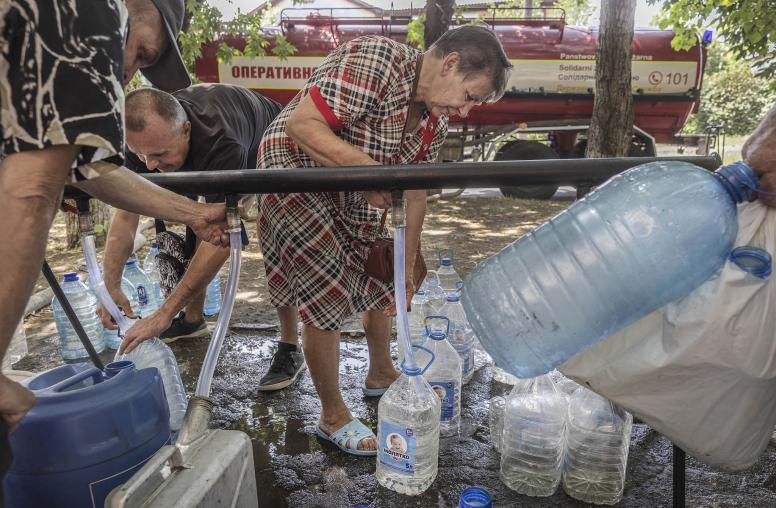Somalia is one of four countries, along with Yemen, South Sudan and Nigeria, threatened with famine this year. Drought and conflict have already pushed nearly 3 million Somalis—roughly the size of Chicago’s population—to the brink of starvation, an unimaginable scale of human suffering. Worse yet is that history could repeat itself—less than a decade ago, famine killed nearly 260,000 Somalis, half of them children under five. But the situation is different this time in at least two important ways.

Today, amid a similar confluence of drought and violence, donors have the benefit of lessons from the failures of the 2011 humanitarian response. Moreover, remarkably, Somalia’s fledging government has a comprehensive strategy for putting the country on a path out of the cycle of conflict, fragility and humanitarian emergency that has plagued Somalia for decades.
The international community must heed the lessons from 2011 by urgently ramping up funding for relief operations. That includes mobilizing additional international funding when heads of state and ministers meet at the United Nations General Assembly in September.
But emergency relief won’t get at the roots of Somalia’s crisis. Donors must, in parallel, fund and offer consistent diplomatic and technical support for Somalia’s recovery strategy.
Addressing emergency needs saves lives, but it tends to treat only the symptoms, not the underlying causes of crises. That is why this year, despite a looming famine and brutal attacks by al-Shabab extremists, Somalia’s newly elected government mustered the wherewithal to work with donors and finalize a comprehensive strategy—including security and development plans—to jumpstart the recovery from decades of devastating war.
Last week, the principal architect of Somalia’s development plan, former Minister of Planning and International Cooperation Abdi Aynte, described the government’s strategy in a webcast conversation with USIP President Nancy Lindborg. The government’s approach builds on the New Deal for Engagement in Fragile States, an international agreement based on time-tested principles for successful recovery from conflict. Somalia's strategy sets out security, development and political benchmarks for Somalia’s transition that aim to boost both the legitimacy and effectiveness of the country’s governing institutions.
“What we now need more of is a police force protecting communities and providing everyday rule of law,” Aynte said. He also noted a recent decision by the Somali Council of Ministers to establish an anti-corruption commission. “The institutions that are supposed to advance transparency and accountability and integrity are simply not there or too weak.”
The United States and Somalia’s other partners endorsed Somalia’s development and security plans in London in May. Yet success hinges on whether all parties stay focused on the theory that underpins it—that successful transitions from conflict require policy reforms and investments to increase trust in government and respond to citizens’ basic needs—in the case of Somalia, minimal standards of security, infrastructure and services that will allow citizens to provide for their families.
Focusing exclusively on battleground gains against al-Shabab at the expense of development investments could derail Somalia’s recovery, reinforcing the very conditions that gave rise to repeated humanitarian crises and to al-Shabab in the first place.
For now, despite a looming famine and the continuing threat of al-Shabab, Somalia’s prospects for transitioning out of conflict are hopeful. The international community must seize the moment. Somalia’s recent history is too painful to repeat.



